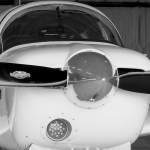Thoughts on revitalizing an under-utilized M20J?
-
Members Online
- thevaliant
- varlajo
- Guy123
- aviatoreb
- Dhuffman8414
- Yetti
- BaldEagle
- Echo
- Jerry 5TJ
- 47U
- redbaron1982
- DCarlton
- spaceman39a
- CAV Ice
- Scottknoll
- jsclafani
- 201Mooniac
- Guillaume
- TCC
- N201MKTurbo
- dzeleski
- PierreL
- Kelpro999
- ElkoRandy20J
- Mcstealth
- Marcopolo
- AviH
- Greg Ellis
- bencpeters
- Bryan G
- ZentRose
- takair
- 1980Mooney
- AgFlyer
- 76Srat
- Ibra
- M20F
- TheAv8r
- IvanP
- Shiroyuki
- Danb
- haymak3r
- Schllc
- Marc B
- BDPetersen
- jamesyql
- MB65E
- Taz
- Vance Harral
- 00-Negative
- Smiles201


Recommended Posts
Join the conversation
You can post now and register later. If you have an account, sign in now to post with your account.